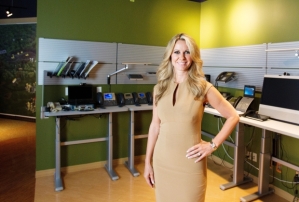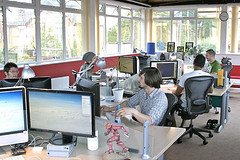 In today’s world where women are a high percentage of the work force, where they wear diverse hats while juggling their professional life with motherhood and even as caregivers to elderly parents, the concept of flexible working environments is no longer just a matter of convenience – it is expedient. Add to that the “new man” of our late 20th/early 21st century, who regularly shares not only parenting responsibilities, but an equal load of the cooking and household chores, and one can see there are good reasons for this trend toward flexibility in the work place.
In today’s world where women are a high percentage of the work force, where they wear diverse hats while juggling their professional life with motherhood and even as caregivers to elderly parents, the concept of flexible working environments is no longer just a matter of convenience – it is expedient. Add to that the “new man” of our late 20th/early 21st century, who regularly shares not only parenting responsibilities, but an equal load of the cooking and household chores, and one can see there are good reasons for this trend toward flexibility in the work place.
One area where we see this is in creative scheduling or Flex-Hours. Flexible hours enable an employee to successfully balance his or her workload with other obligations, such as managing school age children or elderly parents who need assistance. If a company knows its employees’ flexible schedules, it can efficiently manage work assignments in such a way that the work is still properly and efficiently completed within deadline. But what has also been achieved is an environment that reaps the benefits of happy and loyal employees who are function without undue stress. This s the greatest benefit of flexibility in the work place in that it promotes better health and happier employees.
Such a de-stressed work situation even brings financial benefits by way of lower insurance premiums due to fewer health issues. This is backed up by studies that have shown employees who are given choices as to their work schedule or even work location enjoy increased health benefits and are more likely to give attention to their overall health through regular exercise and doctors’ visits, healthy sleep habits, and a decrease in depression and family conflicts.
As mentioned above, location is another area in which flexible working environments bring benefits. In this techy cyber world, it is easier than ever for an employee to work at another location and still be able to complete their work assignments. Working from home allows for the flexibility needed by mothers of young children, a caregiver or perhaps a handicapped employee who finds mobility difficult but is capable and competent in every other way. By using scanning and email, smart phones, Skype and such programs as gotomeeting. com, an employee can set themselves up in their home office and still function as a valuable asset to their company.
Some larger businesses with flexible working environments even offer daycare arrangements so the employee can bring their child or children to work, eliminating one or more extra stops each morning. This frantic morning rush, dropping one child off at the babysitters and another at school can be a major source of stress. A daycarecenter located at the place of employment means one stop in the morning, enabling the worker to start the day feeling calm, collected and ready for work. It also enables them to see their child during their breaks or lunch hour if they choose.
There is a lot of good talent being missed to companies that do not offer flexible working environments for their employees. It is a win-win situation for all involved and a trend that hopefully will become a permanent aspect of 21st century business practices.









